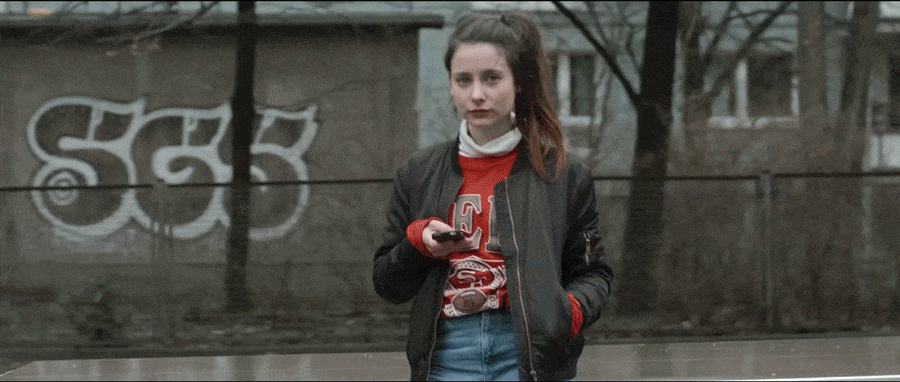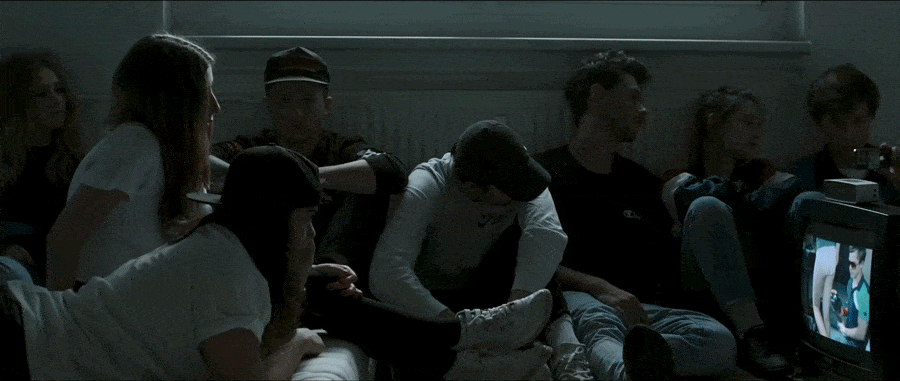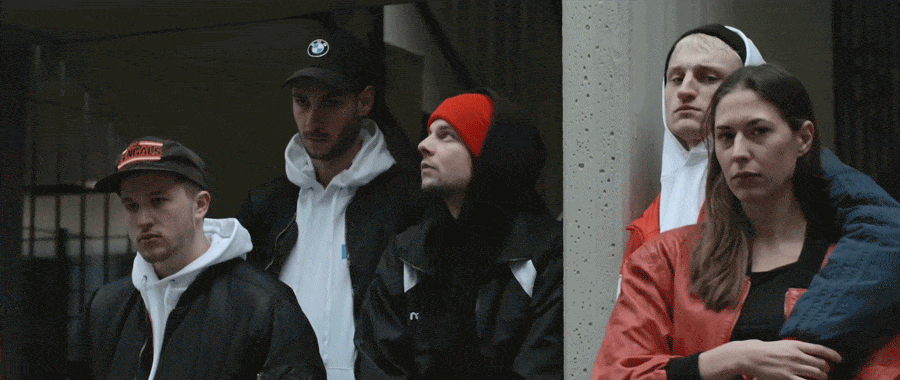Andreas Project Proposal: Difference between revisions
| Line 5: | Line 5: | ||
==How do you plan to make it?== | ==How do you plan to make it?== | ||
After doing research on the historical brevity discourse (Cicero vs Quintilian, Aristoteles, enlightenment, modern communication - just to name a few stations) I want to do research on how the brain processes information. How does distraction work and how is modern media supporting or contradicting it? To which extent are news outlets made to process their information? Let's take the public-sector broadcaster ''Das Erste'' for example: The day starts with five minutes national and international news (including the weather) at 09:00. This newsshow called ''Tagesschau'' then is being broadcasted again from 12:00 to 12:15. At 14:00, 15:00 and 16:00 it provides another program for ten minutes. At 17:00 and 20:00 the Germans can watch news again for fifteen minutes. Eventually, at 22:15 Tagesthemen is providing thirty minutes of news from the day (including weather). How come that this sender thinks the crowd is only capable of receiving ten to fifteen minutes of news throughout the day? | After doing research on the historical brevity discourse (Cicero vs Quintilian, Aristoteles, enlightenment, modern communication - just to name a few stations) I want to do research on how the brain processes information. How does distraction work and how is modern media supporting or contradicting it? To which extent are news outlets made to process their information? Let's take the public-sector broadcaster ''Das Erste'' for example: The day starts with five minutes national and international news (including the weather) at 09:00. This newsshow called ''Tagesschau'' then is being broadcasted again from 12:00 to 12:15. At 14:00, 15:00 and 16:00 it provides another program for ten minutes. At 17:00 and 20:00 the Germans can watch news again for fifteen minutes. Eventually, at 22:15 Tagesthemen is providing thirty minutes of news from the day (including weather). How come, that this sender thinks the television crowd is only capable of receiving ten to fifteen minutes of news throughout the day? Or is that already too much? Of course I am very aware that television is already outdated and society is much more moving to on-demand news media via Apps (on Mobile as well as on Desktop), but doesn't television have enough historical statistics to have the knowledge? | ||
In attempt of getting an even profile of the society I want to film people from all ages. | In attempt of getting an even profile of the society I want to film people from all ages. | ||
Revision as of 21:31, 13 October 2019
What do you want to make?
I want to make a film that features interviews and observations on the topic of brevity. Does generation X, Y and Z really consume more written and spoken information, thus resulting in a shorter attention span, like modern sociologists are making us believe? I want to bring the brevity discourse into the film context with these questions: Can simplification improve the reception of content? From which point of reduction or maximisation of content is the content itself being distorted?
How do you plan to make it?
After doing research on the historical brevity discourse (Cicero vs Quintilian, Aristoteles, enlightenment, modern communication - just to name a few stations) I want to do research on how the brain processes information. How does distraction work and how is modern media supporting or contradicting it? To which extent are news outlets made to process their information? Let's take the public-sector broadcaster Das Erste for example: The day starts with five minutes national and international news (including the weather) at 09:00. This newsshow called Tagesschau then is being broadcasted again from 12:00 to 12:15. At 14:00, 15:00 and 16:00 it provides another program for ten minutes. At 17:00 and 20:00 the Germans can watch news again for fifteen minutes. Eventually, at 22:15 Tagesthemen is providing thirty minutes of news from the day (including weather). How come, that this sender thinks the television crowd is only capable of receiving ten to fifteen minutes of news throughout the day? Or is that already too much? Of course I am very aware that television is already outdated and society is much more moving to on-demand news media via Apps (on Mobile as well as on Desktop), but doesn't television have enough historical statistics to have the knowledge?
In attempt of getting an even profile of the society I want to film people from all ages.
Describe how you will go about conducting your research through reading, writing and practice. In other words, through a combination of these approaches, you will explore questions or interests you have laid out in your general introduction. In this section you can help us understand how your project will come together on a practical level and talk about possible outcome(s). Of course, the outcome(s) may change as your research evolves, but it's important at this stage to have some concrete idea of how your project could come together as a whole.
What is your timetable?
November
Film:
Sketch ideas on how to approach the film: what will be the content and how can it be shot
December
Film:
film testing, map out all technical details: get in contact with individuals, begin production plans; complete screenplay; begin storyboarding;
Write the script and the shooting plan for the final film.
January
Thesis: first thesis draft complete by end of month
Film: all resources/people/support secured by month’s end, complete storyboarding, fix schedule with all individuals
February
Thesis: second draft
Film: set design etc., schedule for filming fix
March
Thesis: complete thesis
Film: Shoot first versions and get feedback from tutors and classmates
April
Film: editing and contingency for filming, if necessary shoot additional shots
May
Film: final editing and completion
Exhibition: exhibition layout plan; printing/construction of any supporting work
June
Exhibition
Why do you want to make it?
Whenever I have a discussion about history or politics, many of my friends are stating that they don't want to take part in the discussion because they feel like they know too little about it. I was observing this not only in the small circle that I used to live in, but I have heard this statement being made everywhere I have been so far. Reading Kenneth Goldsmiths Wasting Time on the Internet I am curious if this is really due to the fact that the modern society is exposed to much more information (Short Messages, E-Mails, Billboards, Radio, Newspages and so on).
I want to find out how a varying extent of content is changing the mediation of communication.
How much communication is necessary? And necessary for whom? For the sender, or the recipient? What defines, what is exceeding the needful, what is unnecessary or what is missing to the needful?
Who can help you and how?
Aside from the tutors who can help me with critical thinking and narrative skills developing, the PZI classmates can always offer excellent ideas for my work. I will reach out to Susanne Janssen, Florian Cramer and Kenneth Goldsmith and see if they would be open to be interviewed for my film. On top of that I will be able to borrow equipment from the photo-studio I am working at right now. Since the Academy is very poorly equipped, this is a substantial help on getting cameras and lenses.
Relation to previous practice
How does your research connect to previous projects you have done? Here you can use the descriptions you made during the Methods seminar or make new descriptions. Your Text on Method will also be useful in completing this section.
Relation to a larger context
After the journalist and book author Kenneth Goldsmith is being confronted with the statement, that in general less is being read than the years before, he is setting up an interesting hypothesis: he is claiming, that it is not being read less in general, but the omnipresence of digital media is causing the opposite. He is stating, that minute by minute mails or short messages are being read. Daily news, Facebookstatuses or the fast Twitternotification on the smartphones of the users are making everyone read more, like no print medium would have been able to. That is why the amount of reading would have even increased; only the way of reading changed. Kenneth speaks of „(…) skimming, parsing, grazing, bookmarking, forwarding and spamming language (…)“. Therefore the author is describing a time, which is shaped by changed production- and reception habits. Almost like an information overload.
Short messages, eMail, Chats and Twitter – these and other mass-media did bring up a mode of correspondance, that is setting the „virtus dicendi“ because of time- and type economy. Emoticons and the more or less creative abbreviation culture (from „fyi“, to „btw“, from „TFG“ to „JRHNBR“) are some symptoms of this maxime.
In the meantime even carriers of important positions are using just 140 characters to send out information of big scope. Donald Trump was therefore even called „the master of simplification“. These messages are unfiltered, uncensored thoughts or comments of one of the most powerful persons in the world. They are probably not being checked on mistakes, reading flow or reasonable sound by spokespersons nor by speech writers. Just think of the famous „covfefe“-Tweet of May 31st 2017, on which the whole world was trying to solve the mystery what covfefe would be. Are these messages therefore more authentic? Closer to the person? Or does it instead just reveal a polarization, that has been less visible before? By using short statements one can react often and quick. But quantity has the tendency to cover quality. Since November 8th 2017 the number of characters – that can be used on Twitter – has been brought up to 280 characters. In times of social media influencing politics; of hyperpolarization and debatedysfunctionality Twitter is withdrawing somehow of dealing with this problem.
Even in the scientific communication a row of new forms of mediation have been introduced: in addition to „classic“ publications like books or magazine articles, blogs and social media are appearing. Evening-lectures are being expanded to Science-Slams, Pecha Kucha-nights or FameLabs. Conferences are increasingly using sharing-concepts and participative formats like fishbowls, roundtables or barcamps. This tendency is often perceived critically by scientists and recipients. Because these new formats are intensifying a basic problem of scientific communication: the urge, to cope with a topic within a limited mass of text or in a limited amount of time – the constraint to a short, concise form. Which formats can scientists, in the sense of serious mediation, be taken responsible for? Isn't scientific content too complex, to be displayed in just 140 (or even 280) characters, in ten minutes or six pictures? Or is science loosing public relevance if it is refusing the demand on brevity and participation?
References
COUPLAND, D. (1991) Generation X: Tales for an Accelerated Culture. 1st ed. New York: St. Martin's Press
EAMES, C. and R. (1953) A Communications Primer [online]. Available at: https://archive.org/details/communications_primer (Accessed: 23 May 2019)
FLUSSER, V. (2000) Towards a philosophy of photography. 1st ed. London: Reaktion Books
GOLDSMITH, K. (2016) Wasting Time on the Internet. 1st ed. New York: HarperCollinsPublishers
JANSSEN, S. (2019) Software organism BA Research Project [online]. Available at: http://www.susannejanssen.eu/software-organism-ba-research (Accessed: 07 October 2019)
ROSA, Hartmut. (2016) Beschleunigung und Entfremdung: Entwurf einer kritischen Theorie spätmoderner Zeitlichkeit. 5. Auflage. – Berlin : Suhrkamp
Sketches
Visual Inspiration:
Metahaven – The Sprawl
The project explores the mutation of propaganda in the age of social media, with a particular focus on how the diffuse, networked circulation of messages through these channels affects how we read, interpret, and understand events.
Quote from http://sprawl.space/about-the-sprawl/ Nowadays, films live in a thousand and one forms on the internet. As short trailers, fragments, cloud-based copies of copies, endangered data, self-hosted vaults, and so on. Viewing cinema on a laptop screen is only possible when remembering that such an experience has little to do with cinema itself. As a hybrid, episodic documentary, “The Sprawl”‘s story isn’t linear. The film lends itself to be seen as a succession of impressions—a trailer, forever unfinished; the duration of each of those video pieces, or “shards,” is attuned to an attention span that is less cinema, and more internet.
Back to Main Project Seminar:
http://pzwiki.wdka.nl/mw-mediadesign/index.php?title=Graduate_Seminar_2019-2020



